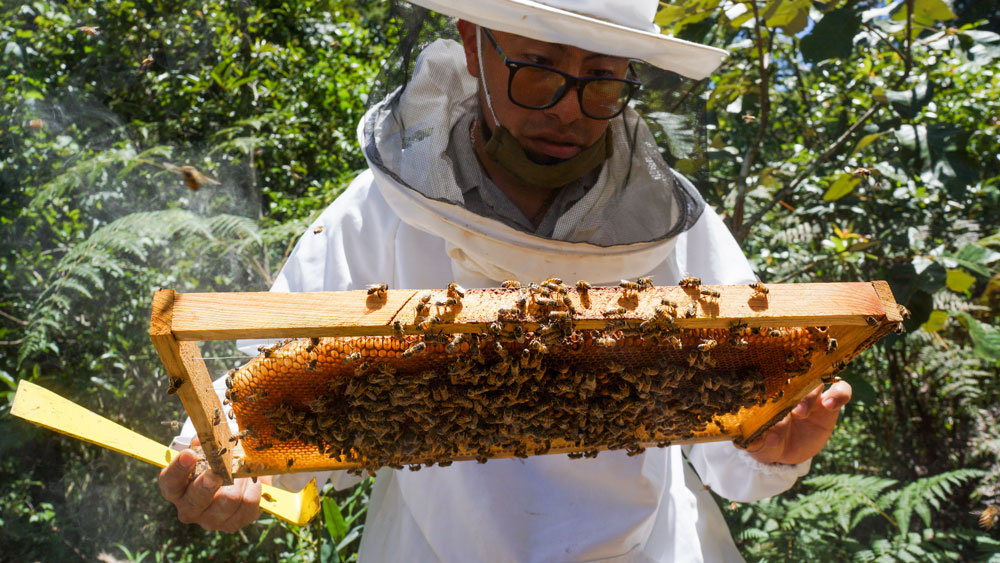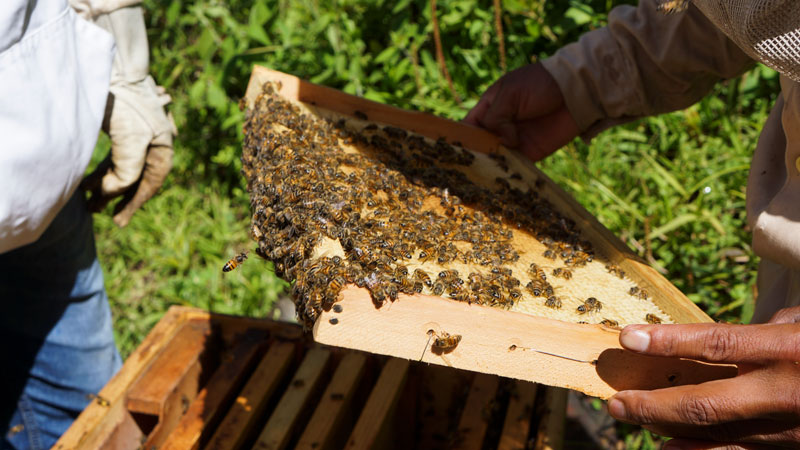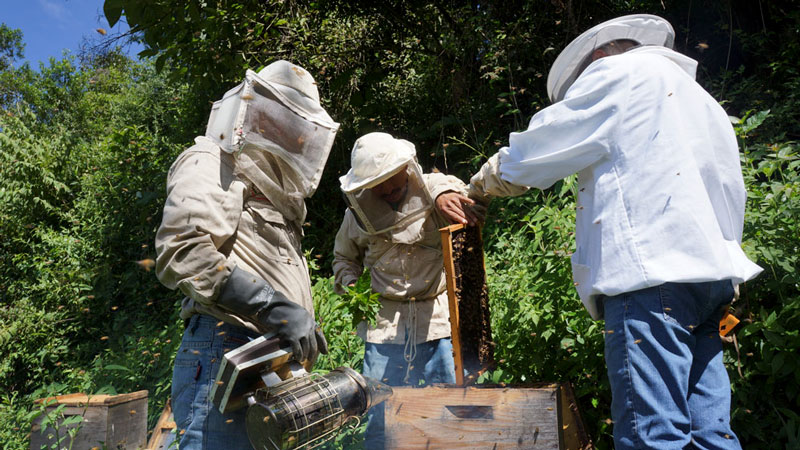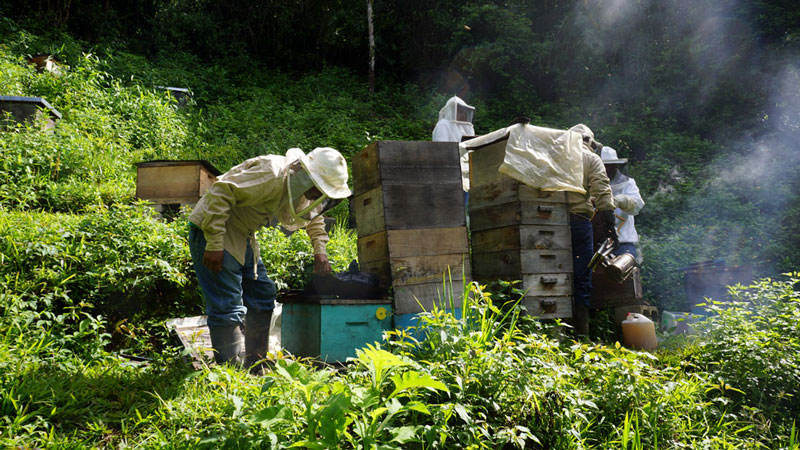How to identify good quality honey
Paola Yáñez Arias

Julio César is a regional environmental promoter at Amextra, in the Los Altos, Chiapas region; He carries out various activities in the communities in terms of ecotechnologies, worm composting, reforestation, etc. as well as, beekeeping, where he provides timely monitoring so that this project is developed and sustained in the groups of beekeepers.
To commemorate International Bee day, Julio told us a little about the honey that is produced and the fundamental role of bees within the region. At Amextra we work to learn and teach how to produce honey that meets all quality standards, using measures within ecological standards:
“The beekeepers are trained monthly on given topics, for example: the quality of honey, how to control certain pests, flowering, all that. These diagnoses are being made and they start working on. “

Quality parameters of honey
Male and female beekeepers -we are strengthening the presence of women in beekeeping- work hard so that the quality of the honey that reaches our homes is the very best. Through several parameters they are able to measure it, among them are: humidity, taste, smell and HMF (hydroxymethylfurfural).
Regarding humidity, there are parameters allowed by the regulations: “the percent should be between 17% and 19.5%”. Which is measured with a refractometer to ensure that it is within the ranger: “So far we’ve had a good percentage that has been between 17% and 19% humidity.”
Other parameters are: taste and smell. “Honey should smell like flowers, like a floral sweet (…) -also- you will sense a taste of flowers, sweet or bittersweet, depending on the sensitivity of each person (…) It should not have strange flavors or smells ”.
The packaging of the product is also carefully carried out for and supervised. Containers that are not specific for honey should not be used, since the honey absorbs the smell of the container easily and quickly. “Many times in the market you buy honey and you sense the taste of butter or oil, that’s because that honey was packaged in a container with oil.”
Finally, we have hydroxymethylfurfural or HMF. This is an indicator of the freshness of honey, which is formed by the dehydration of sugars. “It occurs when the honey is very old or overheated (…) Up to a certain parameter is allowed, but after that, it is no longer allowed for human consumption.”

Agroecological honey is produced in the Los Altos region. It is basically the same as organic honey, the only difference between the two is the seal that certifies them. The organic certification is usually very expensive for producers, therefore, they cannot afford it:
“Here we are talking about the same process only without the seal. Our producers manage the entire natural process, they take care of the well-being of the bees, of the producers, of the environment, of the community, in summary they make sure that the bees live well ”.
In the communities of Aldama and Chalchihuitán, honey production is quite important and has a great impact on the community:
“First of all, if we want to talk about the economy, there is an economic benefit for the producer families and also for the community. Many people buy honey from the producers locally (…) Also, bees fulfill a special function in the communities and in the environment; which is pollination, several of the people’s crops need bees to pollinate, whether they are avocados, lemons, oranges, etc.”
In many cases, beekeeping only seeks the production and overexploitation of bees. In the case of regional producers, the opposite is done, they seek to generate a balanced environment where bees can live in harmony: annually there is a reforestation campaign with floral species, hives are taken care of, the welfare of the bees, the community and the environment.
Do you want to help the bees or the beekeepers? Contact us at [email protected]!

© 2023 Amextra, Asociación Mexicana de Transformación Rural y Urbana A.C. Todos los derechos reservados, México 2017-2023.








Leave a Reply